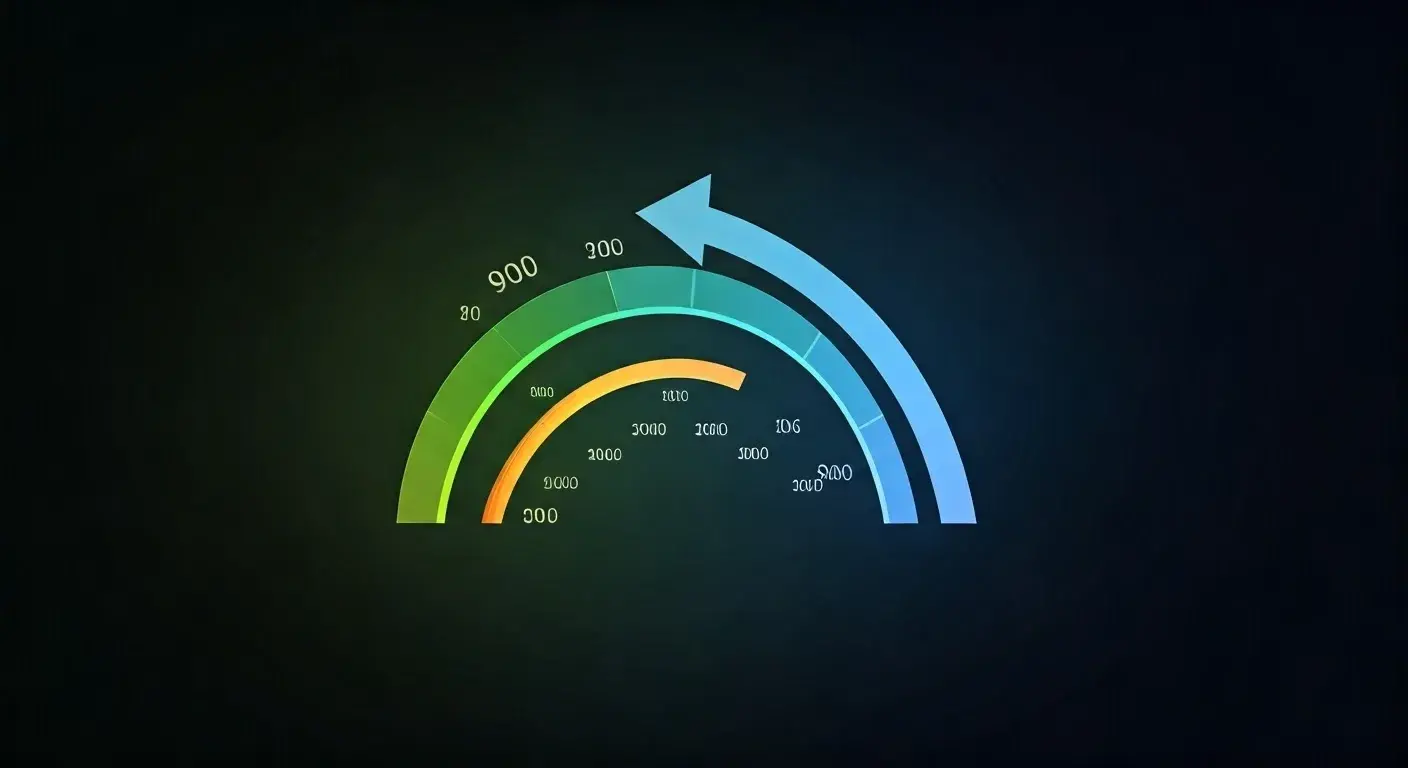-
Posted on: 06 Dec 2024

-
Repairing your credit score is a journey, not a sprint. This comprehensive guide will equip you with the knowledge and actionable steps to effectively improve your creditworthiness, paving the way for better financial opportunities in 2025 and beyond.
Understanding Your Credit Score
Your credit score is a three-digit number that lenders use to assess your creditworthiness. It's a snapshot of your financial behavior, indicating how likely you are to repay borrowed money. A higher score generally translates to better loan terms, lower interest rates, and easier approval for credit cards, mortgages, and even rentals. In 2025, the average credit score in the United States hovers around 715, but this number can vary significantly based on demographic factors and individual financial habits. Understanding what influences this score is the crucial first step in repairing it.
What is a Credit Score and Why Does It Matter?
At its core, a credit score is a statistical prediction of your future credit risk. Credit bureaus, such as Equifax, Experian, and TransUnion, collect vast amounts of data on consumers' credit activities. This data is then fed into sophisticated scoring models, most commonly the FICO score and VantageScore, to generate a numerical representation of your credit health. The most widely used FICO score ranges from 300 to 850, with scores above 740 generally considered "good" to "excellent." In 2025, the landscape of lending continues to evolve, with lenders increasingly relying on credit scores to make critical decisions. A strong credit score can mean the difference between securing a mortgage with a 5% interest rate or a 7% interest rate, saving you tens of thousands of dollars over the life of the loan. It also impacts your ability to get approved for apartment leases, cell phone plans, and even some job applications.
The Role of Credit Bureaus
The three major credit bureaus – Equifax, Experian, and TransUnion – are central to the credit scoring system. They gather information from various sources, including banks, credit card companies, mortgage lenders, and collection agencies. This information includes details about your payment history, the amount of credit you use, the length of your credit history, the types of credit you have, and new credit applications. It's vital to remember that these bureaus are responsible for maintaining the accuracy of your credit file. Errors can and do occur, making regular review of your credit reports essential. By 2025, the integration of alternative data sources into credit reporting is also becoming more prevalent, though traditional credit data remains the primary driver of scores.
The Building Blocks of Your Credit Score
Credit scoring models are designed to weigh different aspects of your credit history. Understanding these components is key to knowing where to focus your repair efforts.
Payment History: The Most Important Factor
This is by far the most influential factor, typically accounting for about 35% of your FICO score. It reflects whether you pay your bills on time. Late payments, missed payments, defaults, bankruptcies, and foreclosures all have a significant negative impact. Even a single 30-day late payment can lower your score. The more recent and severe the delinquency, the greater the damage. Conversely, a consistent history of on-time payments is the bedrock of a good credit score. For 2025, this remains the undisputed king of credit score components.
Amounts Owed: Credit Utilization Ratio
This factor, making up about 30% of your score, looks at how much of your available credit you're using. It's often expressed as the credit utilization ratio (CUR), calculated by dividing your total credit card balances by your total credit card limits. For example, if you have a $1,000 balance on a card with a $5,000 limit, your CUR is 20%. Experts generally recommend keeping your CUR below 30%, and ideally below 10%, for the best results. High utilization suggests you might be overextended and a greater risk. This is a critical area for rapid score improvement.
Length of Credit History
This component, around 15% of your score, considers how long your credit accounts have been open and how long you've been using credit. A longer credit history generally indicates more experience managing credit, which is viewed favorably. This includes the age of your oldest account, the age of your newest account, and the average age of all your accounts. While you can't instantly lengthen your credit history, avoiding closing old accounts (especially those with good standing) can help maintain its average age.
Credit Mix and Types of Credit
This accounts for about 10% of your score. It refers to the variety of credit you manage, such as credit cards, installment loans (like mortgages or auto loans), and personal loans. Having a mix of different credit types can be beneficial, as it demonstrates your ability to manage various forms of debt. However, this factor is less impactful than payment history or credit utilization, and it's not advisable to open new accounts solely to improve your credit mix.
New Credit and Inquiries
This segment, also around 10% of your score, looks at how many new credit accounts you've opened recently and how many "hard inquiries" have been made on your credit report. A hard inquiry occurs when a lender checks your credit as part of a loan or credit card application. Opening many new accounts in a short period or having numerous hard inquiries can signal financial distress and negatively impact your score. Soft inquiries, such as those for pre-qualification offers or employment checks, do not affect your score.
Common Credit Score Killers
Understanding what damages your credit score is as important as knowing what builds it. Identifying these issues is the first step toward rectifying them.
Late or Missed Payments
As mentioned, this is the most damaging factor. A payment that is 30 days or more past due will significantly lower your score. The longer the payment is overdue, and the more frequent these occurrences, the more severe the impact. By 2025, lenders have sophisticated systems to track these delinquencies instantly.
High Credit Utilization
Consistently carrying high balances on your credit cards, even if you make minimum payments, signals to lenders that you are heavily reliant on credit. This can lead to a lower score, even if you have a good payment history.
Collection Accounts
When you fail to pay a debt, it can be sent to a collection agency. A collection account on your credit report is a major red flag and will severely damage your score. Even if the debt is paid off, the collection account will remain on your report for up to seven years, impacting your ability to obtain new credit.
Defaults and Charge-offs
A default occurs when you fail to meet the terms of a loan agreement. A charge-off happens when a lender deems a debt uncollectible and writes it off as a loss. Both are serious negative marks that significantly hurt your credit score.
Bankruptcy and Foreclosure
These are the most severe negative events that can appear on a credit report. A bankruptcy can remain on your report for seven to ten years, and a foreclosure for seven years. They indicate significant financial distress and will dramatically lower your credit score.
Frequent Applications for New Credit
Applying for multiple credit cards or loans in a short period can lead to numerous hard inquiries, which can lower your score. Lenders may interpret this as a sign of desperation or an increased risk.
Errors on Your Credit Report
Mistakes happen. Incorrect late payment notations, accounts that aren't yours, or inaccurate balances can all unfairly drag down your score. Identifying and disputing these errors is a critical part of credit repair.
Repairing Your Credit Score: The Right Way
Repairing a damaged credit score requires a systematic and disciplined approach. It's about demonstrating to lenders that you can be a responsible borrower. The process involves understanding your current situation, addressing negative factors, and building a positive credit history over time.
The Importance of a Long-Term Strategy
Credit repair is not an overnight fix. It's a marathon, not a sprint. Sustainable improvement comes from consistent good financial habits. Focusing on the underlying causes of a low score and addressing them with patience will yield the best long-term results. In 2025, the emphasis remains on building trust with lenders through consistent, responsible behavior.
Step 1: Get Your Credit Reports
Before you can repair your credit, you need to know what's on your credit reports. These reports contain the detailed information that credit bureaus use to calculate your score.
How to Obtain Your Free Credit Reports
You are entitled to a free copy of your credit report from each of the three major credit bureaus (Equifax, Experian, and TransUnion) every 12 months. The official website for this is AnnualCreditReport.com. Due to the ongoing effects of the pandemic, many sources, including the credit bureaus themselves, are offering more frequent free access in 2025. It's crucial to use this official source to avoid scam websites.
What to Look For in Your Reports
Scrutinize every section of your reports. Pay close attention to:
- Personal Information: Ensure your name, address, Social Security number, and employment details are accurate.
- Account Information: Review all open and closed credit accounts, including credit cards, loans, and mortgages. Check the account status (e.g., open, closed, charged-off), balances, credit limits, and payment history.
- Public Records: Look for bankruptcies, judgments, liens, and other public records.
- Inquiries: Note all hard inquiries. If you see inquiries for accounts you didn't apply for, investigate immediately.
Step 2: Analyze and Dispute Errors
Errors on your credit report can significantly lower your score. Identifying and correcting them is a vital part of the repair process.
Common Types of Credit Report Errors
Errors can range from minor inaccuracies to significant misrepresentations. Some common ones include:
- Incorrectly reported late payments.
- Accounts that do not belong to you.
- Incorrect balances or credit limits.
- Closed accounts that are still showing as open.
- Outdated information that should have been removed.
- Incorrect personal information (e.g., wrong Social Security number).
How to Dispute an Error
If you find an error, you have the right to dispute it with the credit bureau that published the report and with the creditor that provided the information.
- Gather Evidence: Collect any documentation that supports your claim (e.g., payment receipts, account statements, letters from creditors).
- Write a Dispute Letter: Draft a clear and concise letter to the credit bureau. Include your personal information, the specific error you are disputing, and why it is an error. Attach copies (not originals) of your supporting evidence. You can find templates for dispute letters online.
- Send the Letter: Send your letter via certified mail with a return receipt requested. This provides proof that the bureau received your dispute.
- Follow Up: The credit bureaus have 30 days (sometimes 45 days if you provide additional information during the initial 30-day period) to investigate your dispute. They must contact the creditor to verify the information. If the creditor cannot verify the disputed item, it must be removed or corrected.
You can also dispute errors directly with the furnisher of the information (the creditor or lender). The credit bureaus are required to provide you with the contact information for the furnisher.
Step 3: Manage Your Payments Strategically
This is where consistent good habits come into play. Focusing on making all your payments on time is paramount.
Prioritize On-Time Payments
As the most significant factor in your credit score, making every payment on time is non-negotiable.
- Set Up Automatic Payments: For recurring bills like credit cards, loans, and utilities, set up automatic payments from your bank account. Ensure you have sufficient funds in your account to cover these payments.
- Use Payment Reminders: If automatic payments aren't feasible, use calendar alerts, phone reminders, or budgeting apps to ensure you don't miss due dates.
- Pay at Least the Minimum: If you're struggling to pay the full amount, always pay at least the minimum balance by the due date. A missed minimum payment is a missed payment.
Addressing Past-Due Accounts
If you have accounts that are currently past due, contact the lenders immediately.
- Communicate with Lenders: Explain your situation and inquire about options like payment plans, hardship programs, or deferments. Many lenders are willing to work with you if you communicate proactively.
- Negotiate Settlements (with Caution): For significantly delinquent accounts or those in collections, you might consider negotiating a settlement for less than the full amount owed. However, be aware that a settled debt can still negatively impact your score, and some lenders may report it as "settled for less than full amount," which can be viewed unfavorably. Always get any settlement agreement in writing before making a payment.
Step 4: Reduce Credit Utilization
Lowering your credit utilization ratio (CUR) can provide one of the quickest boosts to your credit score.
Strategies for Lowering CUR
Here are effective ways to reduce your credit utilization:
- Pay Down Balances: The most direct way to lower your CUR is to pay down your credit card balances. Focus on cards with the highest utilization first.
- Increase Credit Limits: Request a credit limit increase on your existing credit cards. If approved, your CUR will decrease automatically, assuming your balance remains the same. Be cautious, as this may also tempt you to spend more.
- Spread Out Your Spending: If you have multiple credit cards, try to distribute your spending across them rather than maxing out one or two.
- Avoid Maxing Out Cards: Even if you pay off the balance in full each month, if your statement closing date falls when your balance is high, it will be reported as high utilization. Try to pay down balances before the statement closing date.
Understanding Revolving vs. Installment Credit
Credit utilization primarily applies to revolving credit (like credit cards). Installment loans (mortgages, auto loans) have a different impact. While their balances are high, they are expected to be paid down over time, and the key factor is on-time payments.
Step 5: Establish Positive Credit History
If you have a thin credit file or are rebuilding after significant issues, establishing new, positive credit can be beneficial.
Secured Credit Cards
These cards require a cash deposit, which usually becomes your credit limit. They are designed for individuals with poor or no credit. By using a secured card responsibly and making on-time payments, you can build a positive payment history.
Credit-Builder Loans
Offered by some banks and credit unions, these loans involve you making payments on a small loan that is held in a savings account. Once you've paid off the loan, you receive the money. Your on-time payments are reported to the credit bureaus.
Authorized User on a Trusted Person's Account
If a family member or close friend with excellent credit is willing, they can add you as an authorized user to one of their credit cards. Their positive payment history and low utilization on that card can then appear on your credit report. However, if they miss payments or have high utilization, it can also negatively affect your credit. Choose wisely and ensure open communication.
Rent and Utility Reporting Services
In 2025, more services are available that allow you to report your on-time rent and utility payments to credit bureaus. While not all lenders consider this information, it can help build a positive history, especially for those with limited traditional credit. Examples include Experian Boost and UltraFICO.
Step 6: Avoid New Credit Inquiries (Initially)
While building credit is important, it's wise to be strategic about when and how you apply for new credit during the repair process.
Understanding Hard vs. Soft Inquiries
- Hard Inquiries: Occur when you apply for credit. Each hard inquiry can slightly lower your score for a short period. Too many in a short timeframe can be a red flag.
- Soft Inquiries: Do not affect your score. These happen when you check your own credit, or when a company checks your credit for pre-qualification offers or employment screening.
Strategic Application for Credit
During the active repair phase, limit applications for new credit to essential needs. If you need to shop for a loan (like a car loan or mortgage), do so within a short period (typically 14-45 days, depending on the scoring model). This allows the scoring model to treat multiple inquiries for the same type of loan as a single shopping event, minimizing the impact on your score.
Step 7: Be Patient and Consistent
Credit repair is a marathon. The positive effects of your efforts will accumulate over time.
The Timeline for Credit Improvement
- Negative Information: Most negative information, like late payments, remains on your credit report for seven years. Bankruptcies can stay for seven to ten years.
- Positive Impact: The good news is that the impact of negative information diminishes over time. Conversely, consistent positive behavior will gradually improve your score. You might see noticeable improvements within 3-6 months of consistent positive actions, with more significant gains over 1-2 years.
Monitoring Your Progress
Regularly check your credit reports and scores to track your progress. This will help you stay motivated and identify any new issues that may arise. Many credit card companies and financial institutions now offer free credit score monitoring services.
Understanding Different Credit Scoring Models
While FICO and VantageScore are the most common, understanding their nuances can be helpful.
FICO vs. VantageScore
Feature FICO Score VantageScore Range 300-850 300-850 Key Factors Payment History (35%), Amounts Owed (30%), Length of Credit History (15%), Credit Mix (10%), New Credit (10%) Payment History, Credit Utilization, Credit Age and Mix, Available Credit, Recent Credit Minimum Credit History for Score 6 months of credit history, one account reported in the last 6 months 1 month of credit history, one account reported in the last 6 months Common Usage Used by over 90% of lenders Increasingly used by lenders, especially for consumers with limited credit history While the exact weighting differs, the core principles of good credit management are consistent across both models. In 2025, understanding which model a lender uses can be beneficial, but focusing on the fundamental factors will improve your score regardless of the model.
Credit Repair Companies: Pros and Cons
Many companies offer to help repair your credit. It's important to understand what they can and cannot do, and whether they are worth the cost.
What Credit Repair Companies Can Do
- Dispute Errors: They can help you identify and dispute inaccuracies on your credit reports.
- Negotiate with Creditors: Some companies may negotiate with creditors on your behalf for debt settlement or payment plans.
- Provide Guidance: They can offer advice on managing your credit.
What They Cannot Do
- Remove Accurate Negative Information: No legitimate company can remove accurate, negative information from your credit report.
- Guarantee Results: Be wary of any company that guarantees specific results or claims they can remove all negative marks.
- Charge Upfront Fees (in some jurisdictions): In many places, credit repair organizations are prohibited from charging fees before they have performed the services.
Choosing a Reputable Company
If you decide to use a credit repair company, do thorough research. Look for companies with a long track record, positive reviews, and transparent fee structures. Always ensure they are registered and comply with relevant laws like the Credit Repair Organizations Act. In 2025, the rise of online scams means vigilance is even more critical.
Legal and Ethical Considerations
Understanding your rights and the legal framework surrounding credit reporting is crucial.
The Fair Credit Reporting Act (FCRA)
The FCRA is a federal law that governs the collection, dissemination, and use of consumer credit information. It grants you rights, including:
- The right to access your credit reports.
- The right to dispute inaccurate information.
- The right to have inaccuracies investigated and corrected.
- The right to have obsolete negative information removed from your report.
Understanding your FCRA rights empowers you to advocate for yourself and ensure your credit information is accurate and fair.
Avoiding Credit Repair Scams
Be extremely cautious of companies that:
- Promise to remove accurate negative information.
- Ask for payment before providing services.
- Advise you to obtain an EIN (Employer Identification Number) to create a new credit identity.
- Make unrealistic guarantees.
Legitimate credit repair is about correcting errors and building positive habits, not about creating a new financial identity or magically erasing history.
Maintaining a Healthy Credit Score Long-Term
Once you've repaired your credit, the work isn't over. Consistent good habits are key to long-term financial health.
Key Habits for Ongoing Credit Health
- Continue On-Time Payments: This is the golden rule. Make all your payments by the due date, every time.
- Keep Credit Utilization Low: Aim to keep your credit card balances below 30% of their limits, and ideally below 10%.
- Monitor Your Credit Regularly: Check your credit reports at least annually and monitor your credit score for any significant changes.
- Avoid Unnecessary Debt: Only borrow what you need and can afford to repay.
- Limit New Credit Applications: Apply for new credit only when necessary and after careful consideration.
- Review Statements Carefully: Check your credit card and loan statements for any unauthorized transactions or errors.
The Benefits of a Good Credit Score in 2025
In the evolving financial landscape of 2025, a strong credit score continues to unlock significant advantages:
- Lower Interest Rates: Save thousands on mortgages, auto loans, and personal loans.
- Easier Loan Approvals: Increase your chances of getting approved for credit cards, mortgages, and other forms of financing.
- Better Insurance Premiums: In many states, your credit-based insurance score can affect your auto and homeowners insurance rates.
- Rental Opportunities: Landlords often check credit scores to assess tenant reliability.
- Utility Deposits: You may be able to avoid security deposits for utilities and cell phone plans.
- Employment Opportunities: Some employers conduct credit checks as part of the hiring process for positions involving financial responsibility.
Conclusion
Repairing your credit score is a strategic and achievable goal. By understanding the components of your score, diligently addressing errors, managing your payments and utilization responsibly, and maintaining consistent good financial habits, you can significantly improve your creditworthiness. The journey requires patience and discipline, but the rewards – better loan terms, increased financial opportunities, and greater peace of mind – are substantial. Start today by obtaining your credit reports and taking those crucial first steps. Your future financial self will thank you for it.











